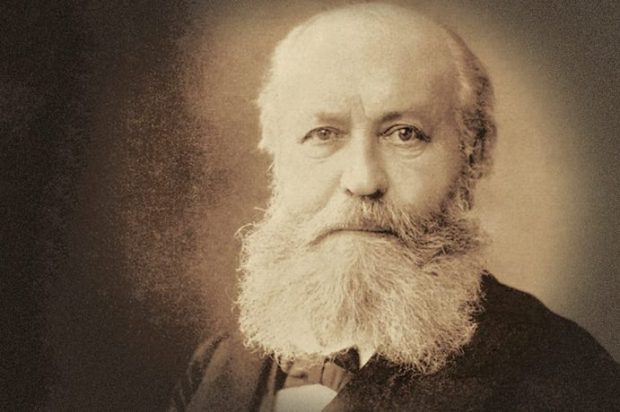French composer Charles-François Gounod (1818-1893) is perhaps best known for his lyric opera Faust, but his compositional output also includes oratorios, masses, motets, songs, ballets, and an array of instrumental pieces. He studied harmony and counterpoint with prolific wind music composer Anton Reicha and won the Prix de Rome grand prize in 1839 for his cantata Fernand. During the late 19th century, Paris served as the center of French musical life, and Gounod’s later years coincided with the rise of the belle époque: a retrospectively-conceived label for the “beautiful era” of pre-World War I Paris which encapsulated visual artists such as Henri de Toulouse-Lautrec and Pierre-Auguste Renoir, composers such as Erik Satie and Gabriel Fauré, and the birth of the Eiffel Tower and the Moulin Rouge.
The premiere of Gounod’s Petite Symphonie for nine winds (1885) was the result of a particular convergence of circumstances. The first contributing factor was Theobald Boehm’s revolutionary improvements to the structural design of woodwind instruments. Boehm re-imagined the mechanism of these instruments so that they could be built with ideal acoustical properties in mind. These advances improved projection of tone, stability of intonation, and technical facility in addition to bringing woodwind instruments to a standard of consistency that string instruments had achieved centuries prior. The second factor contributing to the premiere of the Petite Symphonie was the concurrent resurgence of wind music as championed by flutist Paul Taffanel. Taffanel founded the Société de Musique de la Chambre pour Instruments à Vent (Chamber Music Society for Wind Instruments) in 1879 to commission and promote music for the newly-perfected Boehm-style woodwind instruments. He reached out the several belle époque composers for new woodwind works, and Gounod responded with the Petite Symphonie. The work calls for the standard Mozart serenade instrumentation of two oboes, two clarinets, two bassoons, and two horns, but Gounod also included a single flute part for Taffanel. The resulting four-movement work exhibits a Classical clarity of form and phrase structure with shades of Romantic harmony and expressivity.


One comment